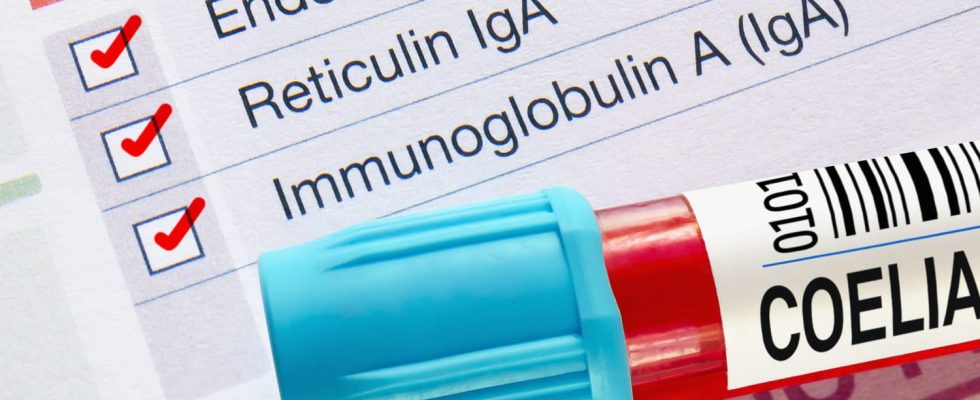Anti-endomysium antibodies (IgA, IgG) are developed by the immune system in response to an intolerance linked to gliadin, the gluten contained in wheat, oats, rye… When and how to measure them? What normal rate?
Definition: what are anti-endomysial antibodies?
Anti-endomysial antibodies are antibodies produced by the body, of the class immunoglobulins A (IgA)in response to gliadin from monocotyledons, protein substances present in the gluten of plant seeds, i.e. in wheat, rye, barley and oats. “Anti-endomysial antibodies are much more specific markers of celiac disease”says Dr. Karim Chaouchi, gastroenterologist and interventional hepatologist.
Anti-endomysial antibodies are markers of celiac disease and dermatitis herpetiformis
Why measure endomysial antibodies?
Anti-endomysial antibodies of the IgA class are of interest in the search foran autoimmune reaction to gluten, an intolerance following its consumption and when the clinical picture presents symptoms of digestive discomfort that have become chronic. Anti-endomysium or anti-deaminated (or deamidated) gliadin antibodies are used when anti-transglutaminase antibody levels are only weakly positive. Anti-endomysium antibodies are more specific markers of celiac disease and dermatitis herpetiformis (cutaneous involvement that often accompanies it) than anti-gliadin antibodies.
The level of anti-endomysial antibodies is measured on the basis oflaboratory serology. The ELISA technique will quantify and measure immunoglobulins A (IgA) in the body. “Their dosage makes it possible to have values in mg/l and to compare them with the index values determined by the laboratories“, he adds.
What is the normal value of anti-endomysial antibodies?
“Each laboratory has its standard for measuring the level of anti-endomysium antibodies“, warns the speaker from the outset. But overall, the normal level of anti-endomysium antibodies is:
- IgA: Se 95% (86-100)
- IgA: Sp 99% (97-100)
- IgG: Se 80% (70-90)
- IgG: Sp 97% (95-100)
At what rate do we speak of celiac disease?
Celiac disease first results in a subclinical phase which is declared by digestive disorders from an early age. “If you don’t look for celiac disease, you can miss the diagnosis.” At this stage, the clinical symptoms are diarrhoea, signs reminiscent of irritable bowel syndrome. In order to confirm the diagnosis in the face of these symptoms, anti-gliadin antibodies and anti-endomysium antibodies must be assayedand realize a duodenal biopsy under intestinal fibroscopy. Negative or positive results with a titer less than 1/40 are seen in normal individuals. Titers greater than 1/40 are abnormal “The histological study based on the biopsy will confirm complete or incomplete intestinal atrophy and/or intraparietal lymphocytosis. And celiac disease can then be confirmed“, he insists. When these examinations are not carried out, the disease sets in and nutritional deficiencies can then manifest themselves:
- iron malabsorption anemia
- weight loss due to nutritional deficiency,
- chronic diarrhea,
- protein malnutrition,
- a worrying deterioration in general condition
These different clinical signs should be alerts to deepen the diagnosis.
What to do in case of abnormal rate?
As this abnormal rate is suggestive of celiac disease, it is important that its management and monitoring be carried out by a gastroenterologist (or a gastro-pediatrician if the patient is a child), a specialist in the digestive tract and its diseases. A precise diagnosis to be thus envisaged and a prescribed treatment which is essentially based on a gluten-free diet.
Thanks to Dr Karim Chaouchi, gastroenterologist and interventional hepatologist, Floréal clinic, Bagnolet and Nogent-sur-Marne
